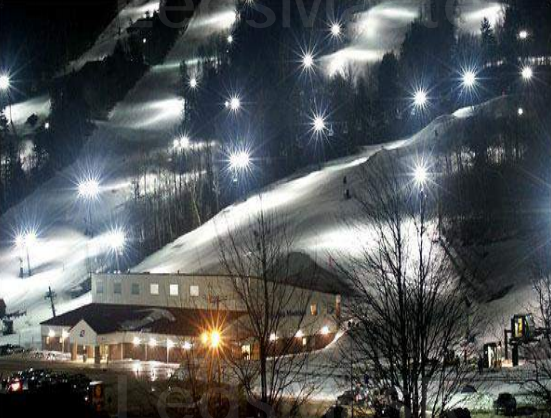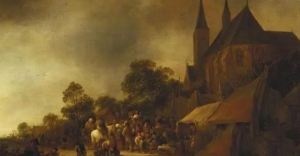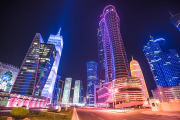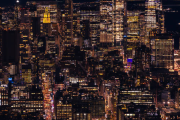Lighting Design Suggestions for Ski Resort
1. Introduction
Skiing is an ancient sport. With the development of economy, this sport has been well promoted in Europe and America and has more people. The promotion of skiing as a competitive sport in China has had considerable twists and turns. In recent years, it has achieved vigorous development with the successful bid for the Beijing Winter Games.
Typical ski resorts are generally divided into indoor ski resorts and outdoor ski resorts. Most of the outdoor ski resorts are ski resorts built by various scenic spots.
Indoor ski resorts generally rely on the illumination of some lights to better show the scene. The design of lighting is a key to various indoor activities. The lighting problems of indoor ski resort design are multi-faceted. Of course, lighting is not only used for lighting, but also to render the atmosphere of the event venue, so as to really attract more people to ski. Pay attention to environmental issues, but lighting is also a kind of environment.
Similarly, outdoor ski resorts also need to do lighting projects, also known as ski resort lighting projects, ski resort landscape lighting design schemes, and ski resort LED lighting. With the booming of the night travel economy, the lighting project of the scenic spot plays an important role. The quality of the outdoor ski resort lighting project directly affects the long-term operation of the scenic spot. How to do a good job in the lighting design of the scenic spot has become an important task of the lighting design team.
First, let’s take a look at the basics of the ski resort!
The lighting of ski resorts mainly adopts middle pole and high pole lighting. The main areas are: training grounds, intermediate ski trails, and advanced ski trails. The slope of the training grounds is relatively gentle, and it is generally mainly for beginners and young children, who need lighting. The grades are generally not very high.
Intermediate ski tracks are generally between 30-80 meters wide (main slope), slopes are between 30° and 60, and the length of the slopes is generally more than 500 meters, which is challenging and highly sporty. , suitable for training and competitions of extreme nature such as snowboarding.
Advanced ski trails generally have higher altitudes and thicker snow, and require a high level of athletes or enthusiasts to participate, because the slope is higher and the safety is higher.
In this issue, we will give some personal suggestions for the lighting design of ski resorts, I hope you can adopt them!
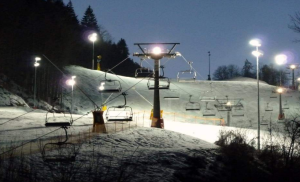
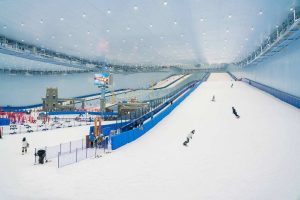
2. Uniform illumination
The indoor ski resort is a sports and entertainment project with high contrast requirements. The venue must use cool white light above 5000K, and the design average illumination requirement is above 300Lx.
The components of the scenic ski resort include artificial buildings and natural landscapes, and the lighting environment should be consistent with its functions. The lighting design is deployed according to the overall planning of the lighting of the ski resort in the scenic area, grasping the characteristics of the site, some focusing on practical functions, some highlighting decoration and viewing, forming a unified and coordinated light environment.
It is not necessary to ensure that all surfaces receive uniform illumination. In fact, terrain can improve visibility through directional light and non-uniformity within the illuminance standard parameters. Semi-directional lighting provides shading and modeling to help see ski slopes.
3. Suitable lights
Lighting mainly comes from light energy converted from electrical energy, which in turn comes from the combustion of fossil fuels. The mineable life of oil and natural gas on earth is about 50 years, and the mineable life of coal is about 300 years, and with the increase of mining volume year by year, the mineable life of these fossil fuels will be further shortened, and the world’s energy is not optimistic. . Therefore, it is a top priority to actively promote energy-saving lighting.
Luminaire efficiency refers to the ratio of the luminous flux emitted by the luminaire to the luminous flux emitted by all light sources in the luminaire under normal conditions, which reflects the efficiency of the luminaire’s utilization of light. In order to make full use of the light emitted by the light source, high-efficiency lights should be preferred.
It is recommended to use high-power LED lights from LedsMasters Lighting Co., Ltd. Although the initial investment of LED lights is slightly larger, the lights have a longer shelf life, more energy saving and emission reduction, and better CRI, which can greatly save electricity consumption. The investment in the early stage can completely save electricity in the later stage. cost recovery.
As a function of the width, curvature and slope of the ski slope, the aiming direction of the luminaire is usually towards the downhill direction (the direction the skier travels). Certain slope conditions and layouts may require some luminaires to be aimed at other locations. You must be very careful when aiming to reduce the chance of glare.
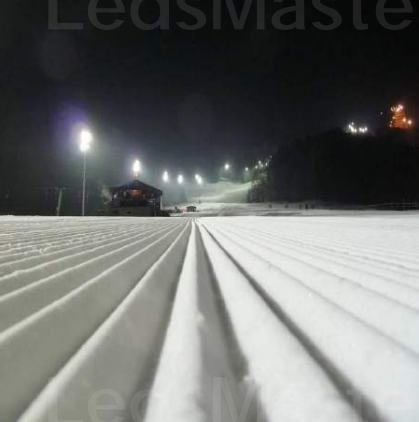
4. Arrangement of lights
For ski resort lighting, LED lights with high illumination and low maintenance cost should be used, and liftable light poles between 15-35 meters should be selected according to the width of the ski run.
According to the height difference distribution of each area, the lights are distributed in density and density accordingly, and the effective pole height is used to determine the longitudinal spacing. On slopes, the effective pole height includes pole height on snow, snow depth, and vertical offset between poles.
The clear height of the light pole should be determined according to the coverage requirements of the illuminated slope, beam, terrain and other special conditions. Typically, the pole is at least 7.6m (25ft) high on the snow.
Strengthening the management of lighting engineering work is of great significance to ensure the normal operation of lighting engineering and good lighting effects. The lighting engineering design of the ski resort in the scenic area should be equipped with a grounding system and leakage protection to ensure the safety of electrical construction. At the same time, the lighting at night should be moderate to avoid blind spots and light pollution.
5. Conclusion
Landscape culture is an effective way to directly attract tourists, and specialization and differentiation are important principles of design. The lighting design and construction of ski resorts must be adapted to local conditions, excavate local culture, reflect the cultural connotation of ski resorts, increase tourism consumption and nighttime consumption, and promote local economic development.
In addition to the main points we mentioned above, there are many other details that should be paid attention to.
For example, foggy weather is very common in ski resorts, so it may be necessary to increase the minimum vertical illuminance to 3lx. This can compensate for snowy or foggy weather conditions; the site should be confirmed when there is a normal amount of snow on the slope, The readings can only be measured when the weather is clear. In addition to these, there are more questions that need to be considered according to the actual situation. If you need it, you can contact us through our website www.ledsmaster.com, we will tailor it for you create a professional one-stop service!
In the lighting design project, LedsMaster Lighting Co., Ltd not only pays attention to function but also pays attention to practicality and beauty. In accordance with the lighting design principles, unified planning is carried out, and the organic combination of landscape architecture and natural landscape lighting is emphasized, which not only gives people a good feeling, but also reduces the negative impact of landscape lighting and lighting projects.
LedsMaster Lighting Co., Ltd. adheres to the value that character determines the product, and has the mission of making the world brighter and brighter. It has been engaged in the lighting and lighting engineering industry for more than ten years. It is mainly engaged in building lighting, road lighting, landscape lighting, and bridge lighting. , R & D, design, production, installation, after-sales one-stop service allows you to save time, money and worry! We warmly welcome your inquiry!
